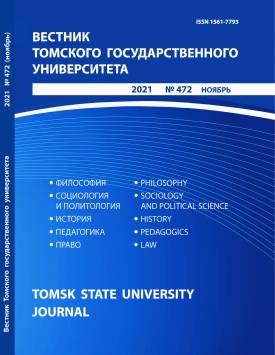Particular Problems of the Practice of Presenting a Person for Identification: Forensic and Criminal Procedural Aspects
The article reveals a complex of problems associated with the implementation of tactics of presenting a person for identification in crime investigations. The range of problems affects methodological, forensic, and criminal procedural aspects. The object of the study was the effectiveness of the practice of implementing the tactical potential of the investigative action of presenting a person for identification. In the study, the following general scientific methods were used: analysis, synthesis, systemic and structural. The following specific scientific methods were also used: modeling, statistical analysis, comparative historical, expert assessment. The article contains the following conclusions. Differentiation of tactical techniques depending on the procedural status of the identifying person is the main vector for the development of the tactical potential of the investigative action under consideration. At the same time, one can agree that the current Criminal Procedure Code of the Russian Federation only slightly changed the wording, without introducing anything fundamentally innovative in tactical terms. In the present period, research into the forensic nature of presenting a person for identification is dominant, aimed at developing tactical practices for conducting new types of identification (by smell, voice, etc.). A significant part of the authors of scientific studies believe that the presentation of a person for identification often depends on the success of an investigation in many criminal cases. Other researchers believe that the presentation of a person for identification is an investigative action with a tactically dubious result. In our opinion, both sides present fair arguments. Therefore, in order to neutralize the position of the second group of authors, it is necessary to develop new types of presentation for identification. In the forensic theory, an undifferentiated procedure for organizing the procedure for presenting a person for identification (independent of the procedural position of the identifier) was developed and is still considered the most rational. The most “disenfranchised” participants in the criminal process are the victim and, especially, the witness as a legally oriented, conscientious figure obliged to give truthful testimony, disregarding the issues of ensuring personal safety, not caring either about their family members or those close to them. The traditional formulations of criminal procedural norms regulating the freedom of choice of actions of an identifiable person in an investigative action, in fact, do not carry freedom of choice. In some cases, there is an undeniable expediency of re-presentation for identification. The article describes both of these cases.
Keywords
presentation of person for identification, tactics, forensic theory, safety of identifier, compulsory presentation for identificationAuthors
| Name | Organization | |
| Brager Dmitriy K. | Sakhalin Institute of Railway Transport, Branch of the Far Eastern State Transport University | brager-4@mail.ru |
| Akhmedshin Ramil L. | Tomsk State University | raist@sibmail.com |
References

Particular Problems of the Practice of Presenting a Person for Identification: Forensic and Criminal Procedural Aspects | Vestnik Tomskogo gosudarstvennogo universiteta – Tomsk State University Journal. 2021. № 472. DOI: 10.17223/15617793/472/24
